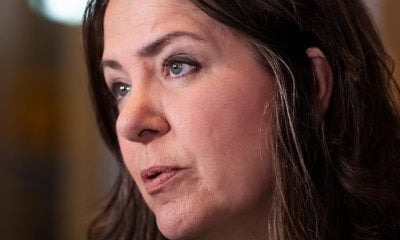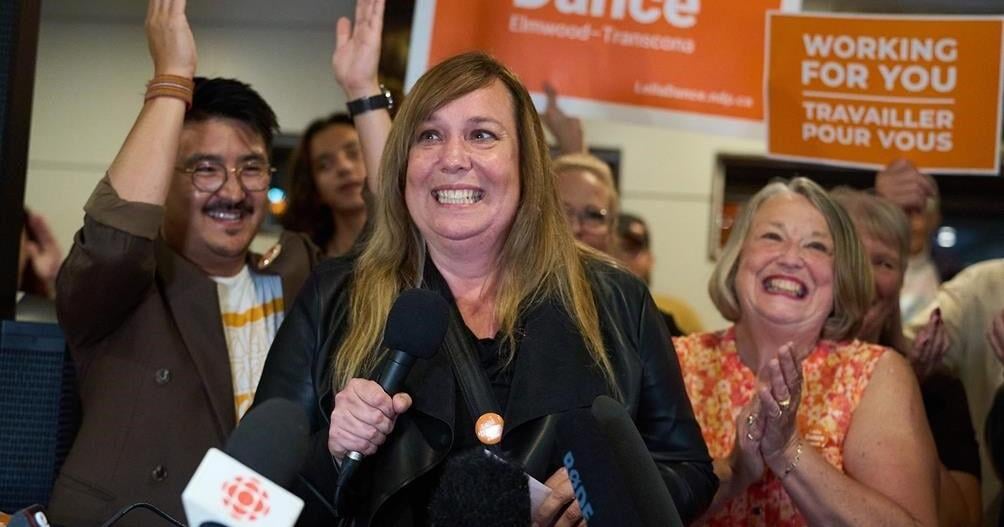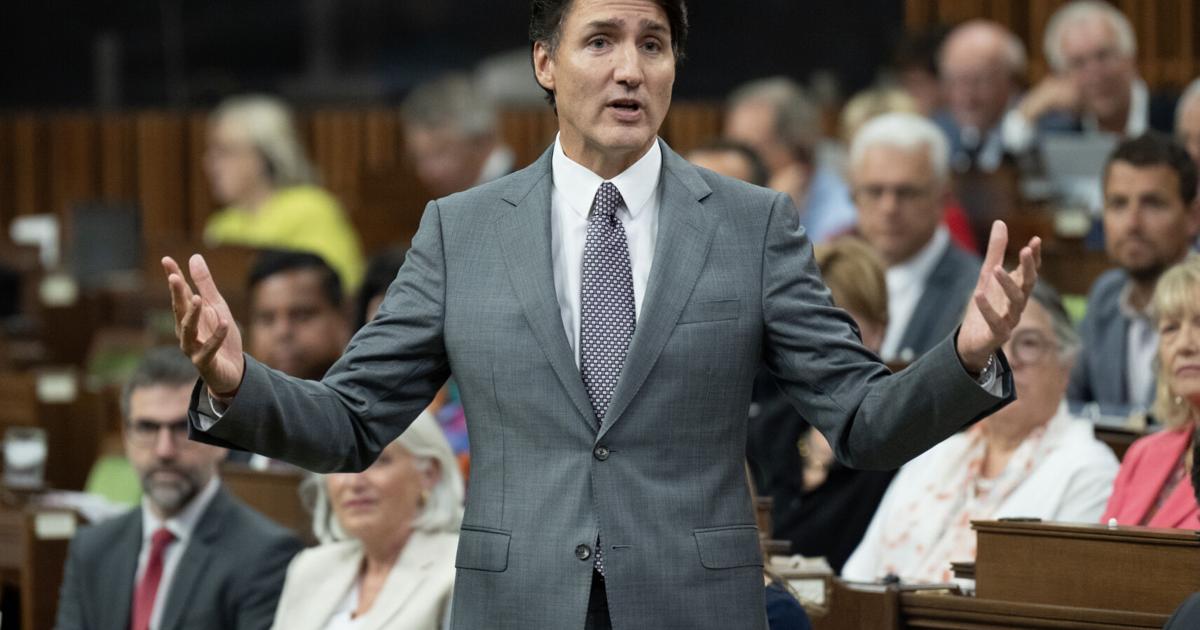In 1944, the future for black Americans appeared both hopeful and uncertain. World War II laid bare some of the fundamental contradictions in US society. Here was a war for democracy and against fascism based on theories of racial superiority. Here was also a war being fought by a segregated army and a country where black people were denied basic citizenship rights. Black people’s intense involvement with the war, however — their sacrifices in service of a country that denied them basic human rights — carried with it the possibility for dramatic gains.
It was in this context, seventy-five years ago, that What the Negro Wants was published. Howard University historian Rayford Logan gathered essays from fifteen influential black political figures from across the ideological spectrum tackling what demands black Americans should push for after the war and the various strategies and tactics to be used to win them.
What the Negro Wants provides a unique view into black politics during that time period. The essays reveal the wide array of ideological tendencies operating within black political life, something often missing today from analyses that adopt the monolithic framework of a singular “black community.” Perhaps more striking was the common agreement among the diverse tendencies — and what this tells us about the transformations in black political life from then to now.
The writers shared a broad consensus around the vital importance of the labor movement (especially the Congress of Industrial Organizations, CIO), given black people’s overwhelming working-class composition. There was also much agreement around broadly social democratic demands and the necessity of interracial coalitions. The political aspirations of this period were fundamentally more radical and working-class-oriented than what has emerged since Black Power — which, despite its militant rhetoric, on the whole moved the black movement away from advocating for a more profound redistribution of power and resources in US society.
A multidimensional assessment of both historical and contemporary black political developments is needed for our current moment. A social democratic current is roaring back onto the political scene. A “political revolution” of the type Bernie Sanders envisions would necessarily involve rebuilding a viable working-class political project among millions of black people. It is with this task in mind that we should review the triumphs and limitations of the past.
A. Philip Randolph and the Far Left
In many ways, the political moment of What the Negro Wants was born out of the initiatives of A. Philip Randolph. The Brotherhood of Sleeping Car Porters (BSCP) organizer had led a mass movement to a significant victory for black workers. His March on Washington Movement (MOWM) took aim at the discrimination against black workers in the defense industries. President Franklin D. Roosevelt was forced to sign an executive order creating the Fair Employment Practice Committee (FEPC) in response to Randolph’s credible threat of a mass march on DC right as the war effort began.
In building the MOWM, Randolph was attempting a bold action that fell outside the purview of the dominant civil rights organizations. The National Association for the Advancement of Colored People (NAACP) relied on white philanthropists and feared the alienating effects the planned march could have.
NAACP leader Walter White allowed chapters to cooperate but did not actively promote it. Eventually, the National Urban League, civic groups, and churches signed on in support. The BSCP was the organizational anchor of the whole initiative, however. Only the union contributed substantial funds, and BSCP members carried the message about the march to rail stops across the country.
The MOWM actively mobilized working-class black people and was not predicated on the direction of middle-class leaders. Randolph toured the country vigorously, building both the BSCP and the march. This was a movement built in the union halls, fraternal chapters, salons, movie theaters, bars, and poolrooms of working-class black America. It caught on because the issue was compelling, the demands were clear, and the moment was politically strategic.
Randolph outlined these heightened stakes in his call to action: “The Negroes’ stake in national defense is big. It consists of jobs, thousands of jobs. It consists of new industrial opportunities and hope. This is worth fighting for.”
After the establishment of the FEPC, Randolph set his sights on making the MOWM into a permanent organization. Units in St. Louis, New York, Chicago, Detroit, and Cincinnati picketed companies with discriminatory hiring practices.
The St. Louis unit, led by BSCP organizer T. D. McNeal, was especially effective, with weekly meetings attracting several hundred people. In May 1942 they led a silent march of five hundred around the US Cartridge Company complex. That same day, the company raised black workers’ wages and hired seventy-two black women.
Using these same networks, Randolph organized a mass rally at Madison Square Garden highlighting the issues of segregation, lynching, and defense jobs. Black Harlem was implored to dim the lights in their homes during the rally as a sign of solidarity. The June 16, 1942 rally was attended by eighteen thousand people and was a five-hour spectacle of a kind not seen since the mobilizations of Marcus Garvey. Historian David Welky described the scene: “Around eighteen thousand African Americans streamed downtown in their Sunday best. Women wearing festive hats and men in solemn ties jammed buses and subway trains . . . Sixty blocks uptown, Harlem’s street culture fell silent out of respect for Randolph’s audacity.”
In this feverish period of activity, Randolph had successfully captured peoples’ imagination and presented an effective model of working-class mobilization. Randolph’s essay from the collection reflects these heady times with soaring rhetoric and bold demands. Randolph thought the immediate task for black people was completing what he described as the bourgeois democratic revolution.
This entailed universal suffrage, free public education, and the building of trade unions. Though recognizing the need to fight discrimination in both the American Federation of Labor (AFL) and CIO, he insisted that unions were central to any strategy for advancement in a population that was almost entirely working-class: “The major and paramount form of economic action by the Negro people must necessarily be the building of trade and industrial unions and the employment of the technique of collective bargaining. This is so because well-nigh 99 percent of the Negro people are workers of hand and brain who earn their living in the sweat of their brow by selling labor in the market for wages.”
In anticipation of developments to come in the following decades, Randolph promoted a diversity of tactics that included picketing, boycotts, and interfaith alliances.
Chicago railway union leader Willard S. Townsend echoed many of Randolph’s sentiments about the centrality of labor and broader political goals. Townsend asserted, “Negro labor today is perhaps the most articulate section of the Negro national community and is farther on the road to presenting a positive challenge to their problems as a race than any other section.”
The program Townsend drew up is strikingly similar to the Bernie Sanders platform today: national health insurance, permanent rent control, public jobs program, nationalization of public utilities. Communist Party leader and American Federation of Teachers (AFT) official Doxey A. Wilkerson drew a connection between black people’s fate and national economic trends, urging black workers to “enter the labor movement in ever-increasing hundreds of thousands.”
The black left during this period saw the advancement of civil rights as part of a broader movement for social change. Black people were one element of a larger bloc fighting for rights embodied in economic security and the expansion of the social welfare state. The leading figures of this tendency were rooted in the trade union movement and molded by its approach to political activity.
The Liberals and Moderates
The more liberal and moderate contributors to What the Negro Wants shared certain core tenets in outlook with the writers of the far left. Logan acknowledges that the CIO “has been the most aggressive organization in recent years in promoting not only economic equality for the Negro but also political and even social equality.”
Roy Wilkins from the NAACP claimed some credit for the establishment of the FEPC, recognizing its importance as a symbol of civil rights progress. His essay contains a substantial focus on economic matters, highlighting the influence of the broader left milieu on organizations like the NAACP. Adding to the chorus of support for the CIO, Wilkins asserts, “The bitter opposition to the CIO in the South stems not alone from that region’s aversion to organized labor, but from the equality within the CIO and the nonsegregation of its members.”
Mary McLeod Bethune, who famously served as part of FDR’s “Black Cabinet,” emphasized the connection between black people’s class position and its organizational expression. Bethune states, “We must understand that the great masses of our people are farmers and workers . . . this means membership and support of labor and farmer unions.”
Of course, there were still profound differences in outlook among the writers along class, ideology, and program. Accomplished professor and pastor Gordon B. Hancock championed the “double-duty dollar” initiative of buying from black businesses only, despite acknowledging that a separate black economy was not viable. Tuskegee University president Frederick D. Patterson praised the achievements of unions but also put great faith in the establishment of small black-owned businesses. Langston Hughes’s program amounted to a mobilization of the black intelligentsia to spread culture to the South.
Overall, however, What the Negro Wants snapshots a period where the elements of the Left advancing a social democratic project anchored in industrial unionism had gained hegemony in black politics.
Black Power: Radical?
Conceptions of black politics today are shaped more by the era of Black Power than that of What the Negro Wants. Black Power is commonly seen as a more radical mode of political expression than the preceding Civil Rights Movement, and more attuned to the systemic issues black people face today. The era of Black Lives Matter has brought with it a certain nostalgia for this period, drawing in younger activists looking for answers to contemporary political dilemmas.
Yet despite having a more radical and militant veneer, on the whole, Black Power represented a retreat from a working-class politics of radical redistribution and consolidation of a middle-class politics geared toward representation and elite brokerage.
Frustrations with the clear limits of civil rights legislation precipitated disillusionment with established civil rights leaders and their preferred strategies for change. Legislation aimed at shattering the heart of Jim Crow in the South had little to offer working-class black Americans struggling in northern cities. In the crucial domains of housing, employment, wages, and education, there were few victories the northern Civil Rights Movement could point to. Urban riots were the first visceral expression of this frustration, and “Black Power” became the galvanizing slogan that captured this changing dynamic.
The ambiguity of Black Power as a political slogan was both a strength and a weakness. Depending on who was speaking, Black Power could mean very different and contradictory things.
Stokely Carmichael and Charles V. Hamilton’s Black Power was one of the earliest articulations of the slogan’s meaning as a theoretical framework. As their argument unfolds, one can see how Black Power ideology fit in comfortably with the dominant liberal framework. Using the experiences of other white ethnic groups as a guide, Carmichael and Hamilton insist that black people must first close ranks in order to advance — a strategy that implies an alliance with the black middle and upper classes, as opposed to a broad, multiracial working-class coalition against the economic elite. The problem with such a strategy focused on ethnic group politics is that it fails to acknowledge the divergent interests within such groups, as well as the tendency for the interests of the upper class to win out in such an alliance.
This framework also mischaracterizes the way other ethnic groups have managed to achieve social progress throughout US history. To be sure, ethnic solidarity and self-help strategies have played prominent roles in such efforts. But other multiethnic movements and institutions such as trade unions, public education, and social welfare programs have arguably had a much more substantial effect on ethnic group advancement. Major CIO unions such as the United Packinghouse Workers of America often had to organize African-American, Eastern European, Irish, Scandinavian, German, and native-born Protestant workers around a common program that was not viable if ethnic divisions were embraced. Similarly, one cannot imagine the New Deal taking place without the multiethnic coalition that was stitched together to make it possible.
The emergence of Black Power coincided with the election of numerous black elected officials. This new black political class exerted a great influence on the direction the movement took. Adam Clayton Powell Jr, who came of age in the era before Black Power, shrewdly embraced the movement and channeled much of its early organizational efforts into a narrow electoralism. Powell’s conception of Black Power was increased black electoral power, and therefore very much within established institutional means.
Despite private disagreements with Stokely Carmichael, the two worked together to convene the first Black Power national conference in 1966. The first conference produced a position paper filled with demands that included increased federal aid to cities, voting rights enforcement, and greater involvement of black people in politics. This did not reflect any kind of radical break with the trajectory of the dominant Civil Rights Movement that was focused on securing basic citizenship rights.
The 1967 Black Power conference in Newark had an impressive 1,100 participants. Despite being advertised as a “people’s” conference, the attendees were mostly middle-class and politically connected. Though the conference was large, the political diversity of organizations represented made productive organizing especially difficult. Organizations such as the NAACP, United Automobile Workers, Better Business Investors, and the New York Police Department all had representatives. The incompatibility of interests between the different groups meant that the conference avoided organizing around specific issues such as jobs or education. The conference did, however, produce a noticeably moderate list of proposals that included the establishment of neighborhood credit unions, “buy black” campaigns, the creation of black nonprofits, and cooperative enterprises.
The 1968 Black Power conference in Philadelphia, sponsored by the Clairol company, also revealed contradictions the movement was facing. A heated debate arose around the white leadership of the almost legendary Health Care Workers’ Union, 1199C. The union was known for its bold organizing of low-wage black and Puerto Rican workers, and seen as a key ally to the Civil Rights Movement. Many of these workers said the union was a crucial source of dignity and one of the only avenues available for modest economic advancement. Martin Luther King Jr was a staunch supporter of 1199C, calling it the “authentic conscience of the labor movement.” Leaders in 1199C also initiated groundbreaking political education programs that helped challenge the racism of their white members.
But instead of discussing the merits of the union’s concrete advancements made for black workers, the debate at the conference became singularly focused on whether a black person was in leadership or not. As one conference participant framed it, “With white leadership at the top, how can a black organization progress?”
The first organizational expressions of Black Power were impressive in their ability to mobilize a large number of activists from a wide variety of organizations. But important distinctions can be seen between these efforts and organizational modes of the 1930s and 1940s like the Congress of Industrial Organizations and March on Washington Movement. The early Black Power conferences drew from a middle-class base and produced demands that catered to that element.
Many of the writers in What the Negro Wants saw the CIO as a natural working-class base in which to anchor redistributive demands like full employment, national health care, and raising the minimum wage.
The Gary Convention and After
The Gary Convention of 1972 was a peak moment of Black Power’s currency and influence within wider black politics. Mainstream black elected officials were pulled into participation despite reservations. These elected officials did not want to be pressured into taking positions that might conflict with their often multiracial and multi-class constituencies. Other black power activists did not have to contend with this problem, because they were not elected representatives with a base.
Although representative of a wide array of political strains, the convention was still mostly composed of black political elites. The “Black Agenda” produced by the convention included many laudable social democratic planks. But the common bond of racial identity could not paper over substantial political differences that emerged throughout the convention, however.
The most profound disagreement between black nationalists and more mainstream black political figures centered around the idea of local black political control. NAACP president Roy Wilkins feared that this strategy “would fetter black America forever into the poorest and least influential sectors on national life.” Richard Hatcher, as the mayor of a deindustrializing city, lamented that fundamental control of money, jobs, and resources remained in the hands of larger national corporations and federal agencies.
There were no institutional means of ensuring loyalty and uniformity in action after the convention concluded. Individual political figures used the media attention as a way to advance their own careers through conventional channels. Shortly after the Black Agenda was published, for example, the Congressional Black Caucus (CBC) published a more moderate platform than what was contained in the agenda. With this move, the CBC established itself as a more official spokesperson for the broader black population and ensured a level of influence within the Democratic Party.
William Strickland, cofounder of Atlanta-based black nationalist think tank Institute of the Black World, reflected on his disappointment with the results of the Gary Convention: “The class factor in black politics is not by itself an insuperable obstacle, but it must be admitted if it is to be successfully transcended.”
Less than a decade of Black Power quickly revealed that the incorporation of a layer of black public officials and voters was achievable through institutional means and without a fundamental redistribution of resources. Lyndon B. Johnson’s “war on poverty” created a new stratum of black political leaders who engaged in contained and nonthreatening action. Programs like Legal Services, Job Corps, and Community Action Program activated these new administrators in ways compatible with the ethnic group model of politics. These officials oversaw the disbursement of targeted and limited federal aid to urban areas. In the process, new black political actors were given access to the resources and technical know-how of local public administration. Far from the more expansive reforms of the New Deal era, Great Society programs did not fundamentally alter the relationship most working-class black people had with the economy.
Subsequent developments in black politics have exhibited the same limits and contradictions evident in the Black Power conferences and Gary Convention. The New Left embraced overgeneralizations that associated unions and white workers with inherent racism and reaction, downplaying the rich history of interracial union struggles — and the fact that unions are still the most integrated institution in American society.
It also opened up the door to cynical manipulation by political elites. Maynard Jackson, Atlanta’s first black mayor, outflanked mostly black striking sanitation workers in 1977 by framing the strike as an attack by the white-led AFSCME union on his black administration.
The Jesse Jackson campaign emerged in the 1980s as the prospects for robust social welfare policies diminished and the New Deal coalition frayed. Jackson, similar to Barack Obama, was powerful as a symbol because his lack of concrete substance allowed people to project political hopes onto him. He used churches and media spectacles to give his campaign the aura of a grassroots movement.
To be sure, many movement activists and organizations were inspired by the campaign and participated in trying to build it. But in the end, Jackson’s presidential run did not build a broad enough genuine working-class coalition.
Increasingly, the focus of racial politics for black political elites became affirmative action policies that disproportionately favor the upwardly mobile, high-status job appointments, and minority business development. The Million Man March of 1995, organized by Nation of Islam leader Louis Farrakhan, was framed as an effort to “convey to the world a vastly different picture of the black male.” It brought out record numbers of African Americans into the streets, but lacked any specific policy demands or long-term political commitments. Gatherings like the Black Radical Congress (1998) and the National Black Peoples Unity Convention (2006) failed to take on issue-based campaigns related to the material needs of black workers. Black Power-era posturing and rhetoric have been repeatedly revived, but without the same ability to influence mainstream political developments to any degree.
The budding social democratic current in American politics, currently centered around the Bernie Sanders campaign, is reviving a working-class politics most pundits thought dead. Despite taking place in a dramatically different context, one can see echoes of the perspectives expressed in What the Negro Wants. The labor movement is decimated, but still significant and diverse. Battles over the public sector will be key to resisting the horrifying plunge in black workers’ living standards. Campaigns on issues like public education, saving the post office, and robust job programs are rooted in the concrete concerns of black working people across the board. Moving forward in this spirit is the only way true racial justice can be achieved.



































